A Numerical Study on the Decomposition and Diffusion Characteristics of SF6 in Gas-Insulated Switchgear with Consideration of the Temperature Rising Effect
Abstract
1. Introduction
2. Contact Deterioration and Temperature Rise Characteristics of the Disconnect Switch Contacts
2.1. Analysis of the Basic Structure and the Key Parameters of the GIS Disconnect Switches
2.2. Calculation Method of the Contact Resistance and Temperature Rise of the GIS Disconnect Switch Contacts
3. Diffusion Characteristics of SF6 Gas
3.1. Decomposition Properties of the Gases and Their Influencing Factors
- (1)
- With the increase of the contact temperature, the growth rate of the CO concentration is significantly accelerated. When the contact temperature increases from 320 °C to 330 °C, the CO concentration grows significantly. When the contact temperature reaches 370 °C, the CO concentration approaches 16 ppm.
- (2)
- With the increase of the contact temperature, the growth rate of the H2S concentration also accelerates, but the initial concentration of H2S is smaller than CO; when the contact temperature reaches 350 °C, the concentration of CO is 9 ppm and the concentration of H2S is 13 ppm, and the concentration of H2S is obviously larger than the concentration of CO. Therefore, the concentration of H2S grows faster than that of CO. When the contact temperature reaches 370 °C, the concentration of H2S reaches 23 ppm, which is also higher than that of CO.
- (3)
- The concentration of SO2 increased gradually with the increase of the contact temperature, but always remained at a lower concentration level. When the contact temperature reached 370 °C, the concentration of SO2 was about 2.5 ppm, which is lower compared to CO and H2S.
3.2. The Diffusion Law of Gases and Its Influencing Factors
3.3. Investigation of the Natural Convection in a Closed Cavity under the Action of a Local Heat Source
- (1)
- The direction of the fluid movement is the flow to the upper middle, and then separate the flow at the top, and then flow downward after flowing to the inner side of the wall, and the trajectory of this flow is independent of the Ra number and the size of the heat source.
- (2)
- The larger the size of the heat source, the greater the fluid flow rate, the higher the Ra number, the more obvious the effect.
4. Numerical Simulation of the SF6 Decomposition Gas Diffusion Characteristics under the Local Superheat Conditions
4.1. Analysis of the Multi-Field Coupling Calculation Methods
- (1)
- The indirect coupled analysis method solves each physical field independently. A suitable solution model and a mesh discretization method are used for each field, thus improving the efficiency of the solution.
- (2)
- The indirect coupling analysis is mainly an independent solution, obtained after decoupling the vortex field and the flow field–temperature field, i.e., the solution of the flow field and the temperature field still belongs to the direct coupling analysis, and the solution of the vortex field and the flow field–temperature field causes the number of degrees of freedom to decrease when the flow field and the temperature field are directly coupled to the solution.
4.2. Numerical Modeling Analysis of the SF6 Decomposition Gas Diffusion under the Natural Convection Conditions
4.2.1. GIS Physical Model Results
4.2.2. GIS Disconnect Switch Flow Field–Temperature Field Solution Domain
4.3. Mesh Division and the Component Transport Model Setup
4.3.1. Grid Division
4.3.2. Setting of the Component Transport Model
5. Numerical Simulation Results and the Analysis of the SF6 Decomposition Gas Diffusion under the Natural Convection Conditions
5.1. Flow Field–Temperature Field Results and Analysis
5.2. Diffusion and Distribution of the Gas Components
5.2.1. Analysis of the CO Mass Fraction Distribution
5.2.2. Analysis of the Mass Fraction Distribution of SO2
5.2.3. Analysis of the Mass Fraction Distribution of H2S
6. Conclusions
- The vortex field yields the contact resistance as the main heat source, which plays a decisive role in the distribution of the temperature and flow fields; the simulation results of the flow field–temperature field show that the contact point is the heat source, forming a temperature difference that leads to the natural convection within the model.
- CO, H2S and SO2 gases are diffused with the flow field in the early stage. First, the diffusion occurs until the shield opens above the right side of the upper wall of the GIS cavity. Then, due to the blockages, part of the gas along the upper wall continues to flow to the left and right wall diffusion. Part of the rebound downward diffusion, at this time, slowly occurs, causing the fluid flow to rely on the diffusion of the gas concentration difference.
- The gas source is close to the left side of the GIS cavity. The simulation results show that, after the arrival of the gas on the upper wall, the source is first diffused to the upper left corner of the left flange, and then relies on the diffusion concentration to the right wall flange of the GIS cavity. The concentration of gas is higher near the upper right corner.
- Accordingly, the best gas sampling point for the GIS model can be judged, which provides a basis for the more accurate collection of the GIS equipment’s decomposition gases, during the actual operation and maintenance.
Author Contributions
Funding
Institutional Review Board Statement
Informed Consent Statement
Data Availability Statement
Conflicts of Interest
References
- Cui, Y.; Ma, H.; Wang, T. Fault analysis of GIS based on fault tree theory. High Volt. Electric. 2015, 51, 6. [Google Scholar]
- Ning, Y.; Sun, H.Y.; Zhang, W.; Lu, B.; Ge, D. Analysis of overheating caused by connection gaps between GIS high-voltage bus segments. J. Electr. Eng. Technol. 2017, 32, 8. [Google Scholar]
- Camilli, G.; Gordon, G.S.; Plump, R.E. Gaseous Insulation for High-Voltage Transformers [includes discussion]. Trans. Am. Inst. Electr. Eng. Part III Power Appar. Syst. 1952, 71, 513. [Google Scholar] [CrossRef]
- Dervos, C.T.; Vassiliou, P.; Mergos, J.A. Thermal stability of SF6 associated with metallic conductors incorporated in gas insulated switchgear power substations. J. Phys. D Appl. Phys. 2007, 40, 6942. [Google Scholar] [CrossRef]
- Wang, Y.; Li, L.; Yao, W. Volume fraction and characteristics of SF6 gas decomposition products during simulated overheating faults in electrical equipment. High Volt. Electron. 2011, 47, 62–69. [Google Scholar]
- Wang, X.P.; Xiao, W.; Hu, M.Y.; Deng, Y. Classification of GIS insulation deterioration trend based on SF6 decomposition product fusion judgment. High Volt. Technol. 2016, 42, 7. [Google Scholar]
- Sun, G.; Guan, X.; Jin, X.; Xie, Z.; Kong, L. Analysis of overheating faults in bus joints of gas insulated switchgear based on multi-field coupling calculation. High Volt. Technol. 2014, 40, 3445–3451. [Google Scholar]
- Chen, Q.; Li, Q.M.; Cong, H.X.; Xing, J. Online monitoring technology of GIS disconnect switch contact temperature based on multipoint distributed fiber grating. J. Electr. Eng. Technol. 2015, 9, 298–306. [Google Scholar]
- Feng, Y.; Qi, Y.; Lan, J.; Zhang, H.; Yang, W.Y. Analysis of electrical contact performance of two different structures of tulip contacts. High Volt. Electron. 2022, 58, 6. [Google Scholar]
- Peng, H.; Wu, L.; Guan, X.Y.; Dong, Z.; Shen, Q.Y. Numerical calculation and analysis of transient temperature rise of 1250 A plug-in tulip contact based on field-coupled finite elements. High Volt. Electron. 2020, 56, 8. [Google Scholar]
- Zhang, S.L. Research on the Relationship between Contact Resistance and Temperature Rise of GIS; North China Electric Power University: Baoding, China, 2016. [Google Scholar]
- Chen, T.X.; Fang, X.L.; Su, X.Y.; Liu, T. Experimental research on application of memory alloy spacer to power device security and energy saving. Eng. J. Wuhan Univers. 2014, 47, 494–501. [Google Scholar]
- Dakin, T. Thermal Aging of Dielectric Gas. In Gaseous Dielectrics II; Christophorou, L.G., Ed.; Pergamum Press: Oxford, UK, 1980; pp. 283–293. [Google Scholar]
- Fan, Q. Development of Experimental System and Experimental Methodology for Superheat Decomposition of Sulfur Hexafluoride Gas; Chongqing University: Chongqing, China, 2013. [Google Scholar]
- Wu, J.; Wang, Z.B.; Lv, H.; Sun, S.; Wang, Q. Calculation and experimental study of GIS temperature rise considering the influence of airflow field. High Volt. Technol. 2020, 9, 815–823. [Google Scholar]
- Chen, X.L.; Zhao, T.C.; Chen, L.C.; Yao, Q.; Miao, Y.L.; Cao, Z.Q. Correlation characteristics of local overheating fault degree and SF6 decompositions in GIS equipment. High Volt. Electric. 2018, 54, 117–123. [Google Scholar]
- Tang, J.; Yang, X.; Yang, D.; Yao, Q.; Miao, Y.; Zhang, C.; Zeng, F. Using SF6 Decomposed Component Analysis for the Diagnosis of Partial Discharge Severity Initiated by Free Metal Particle Defect. Energies 2017, 10, 1119. [Google Scholar] [CrossRef]
- Xu, Z.; Min, J. Effect of heat source size on natural convection in rectangular cavity. Hydrodyn. Res. Prog. 2006, 21, 730–734. [Google Scholar]
- Moench, S.; Dittrich, R. Influence of Natural Convection and Volume Change on Numerical Simulation of Phase Change Materials for Latent Heat Storage. Energies 2022, 15, 2746. [Google Scholar] [CrossRef]
- Zhang, S.; Zhang, L.; Pan, X.M. Numerical simulation analysis of tulip contact temperature field based on virtual material method. South. Power Grid Technol. 2020, 14, 7. [Google Scholar]
- Saber, H.H.; Yarbrough, D.W. Advanced Modeling of Enclosed Airspaces to Determine Thermal Resistance for Building Applications. Energies 2021, 14, 7772. [Google Scholar] [CrossRef]
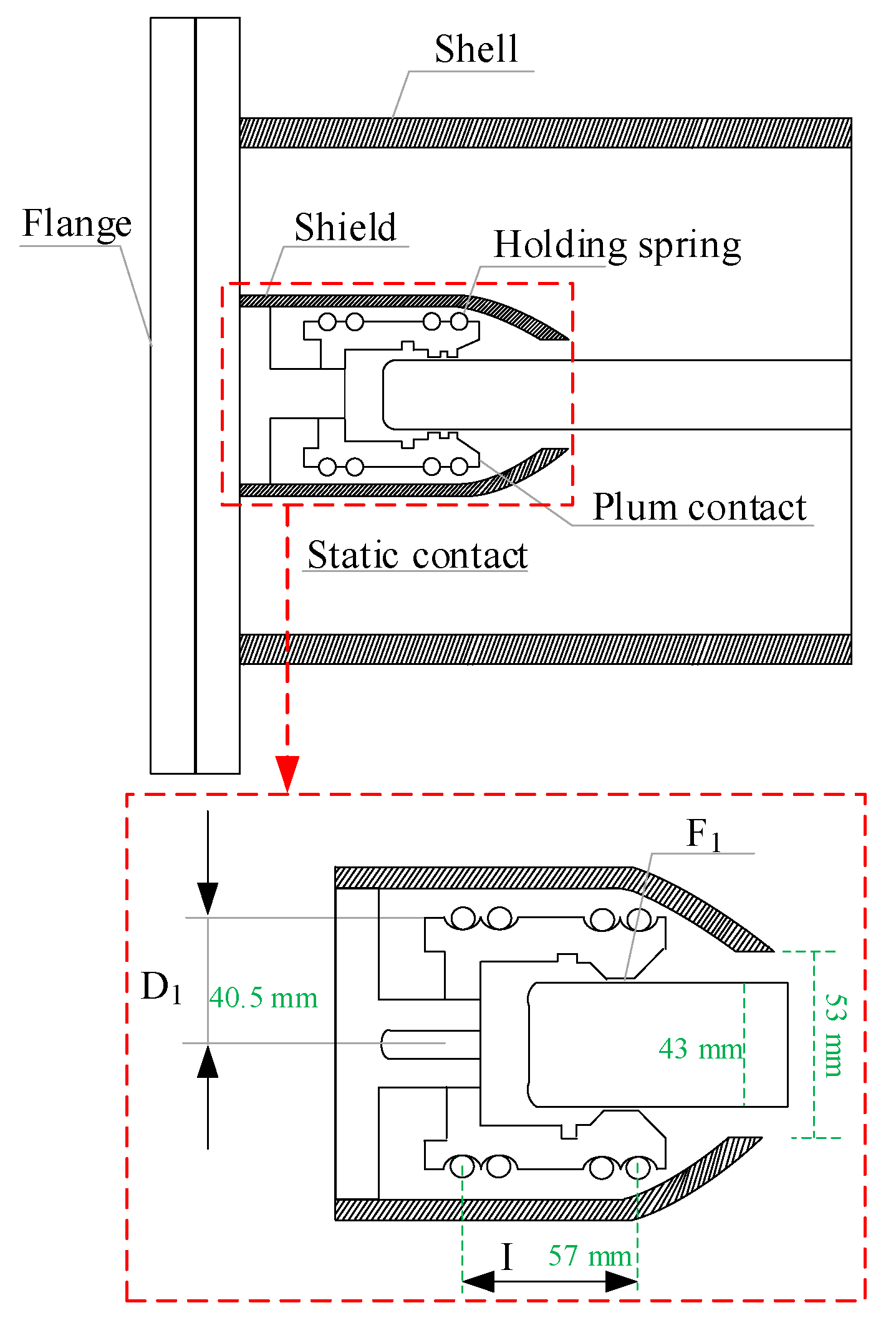
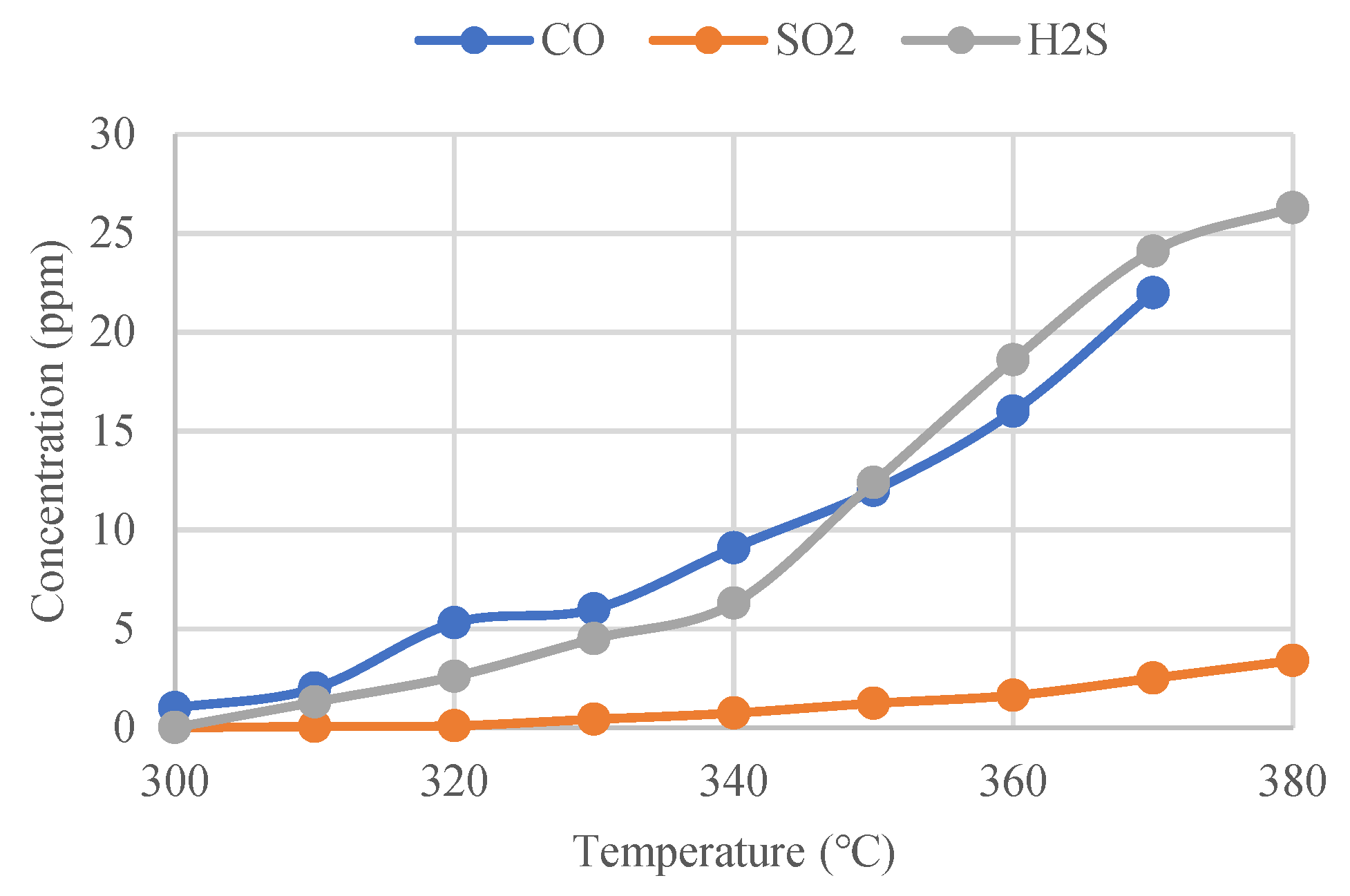

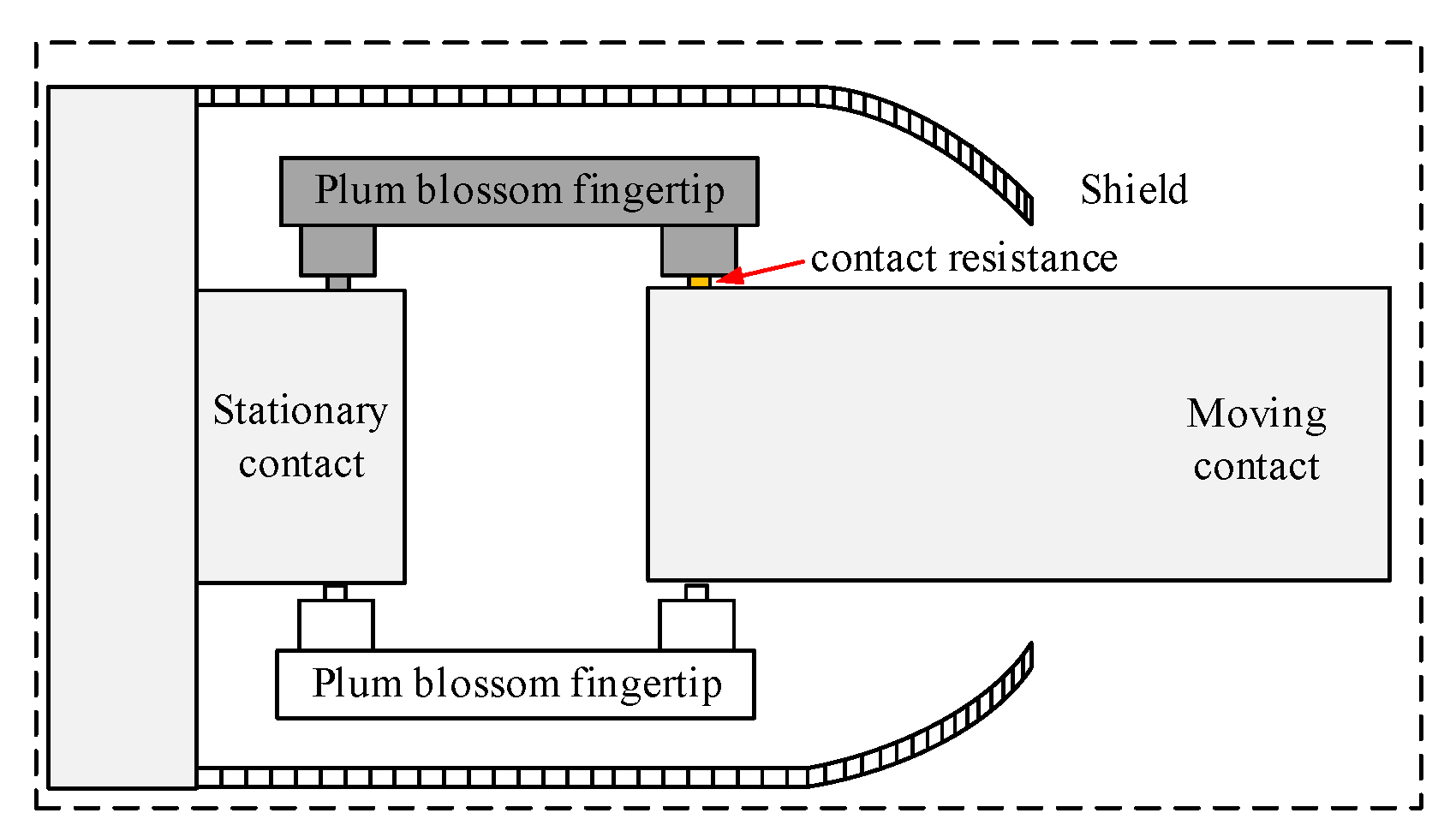

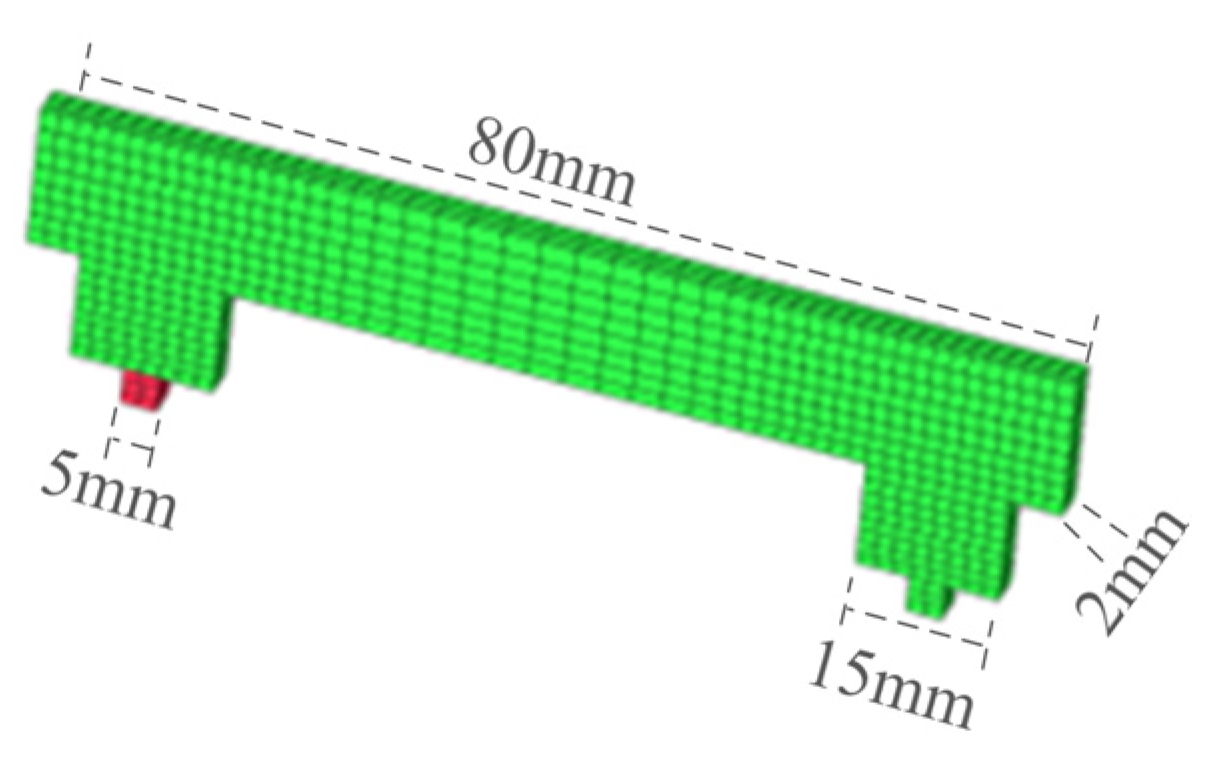
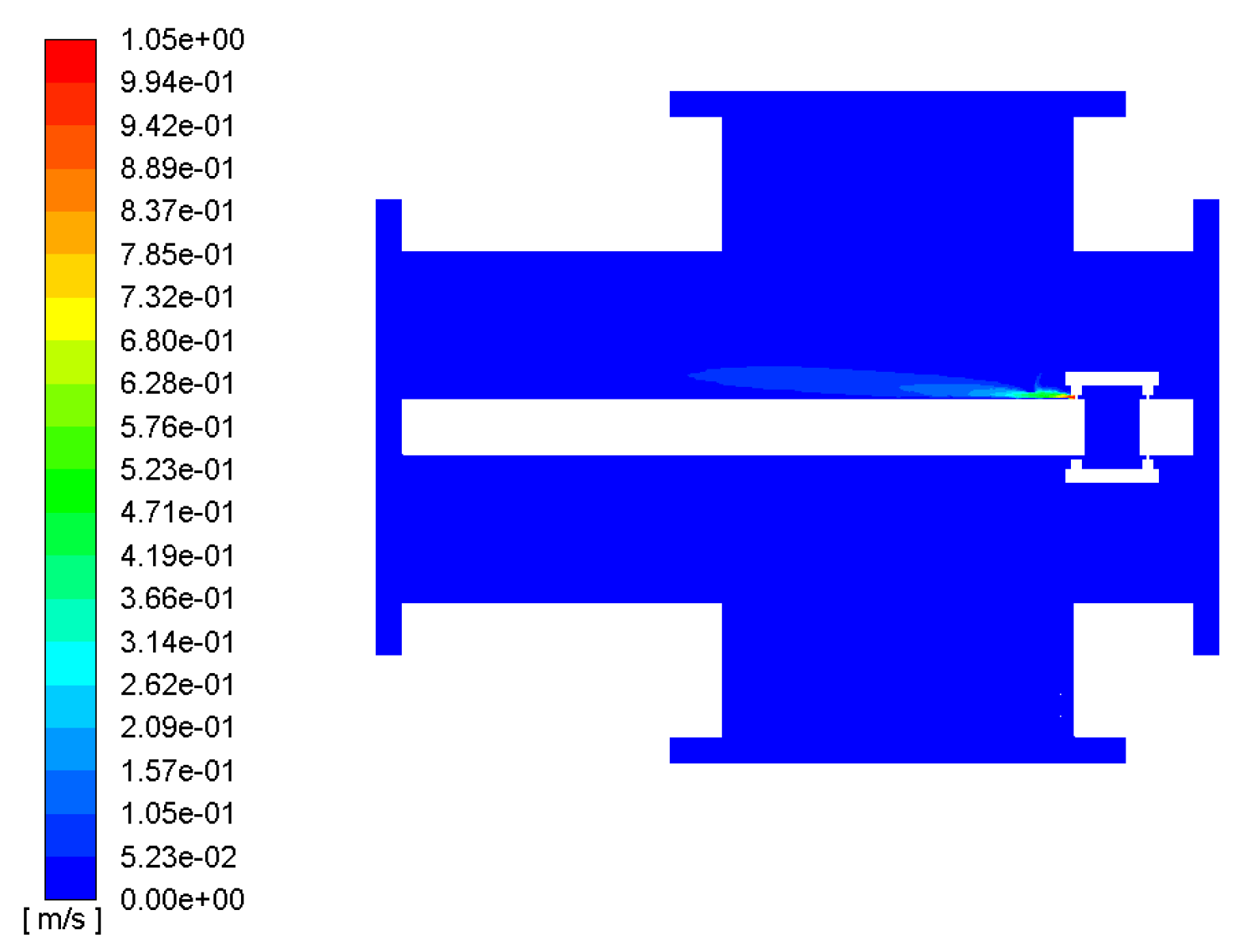
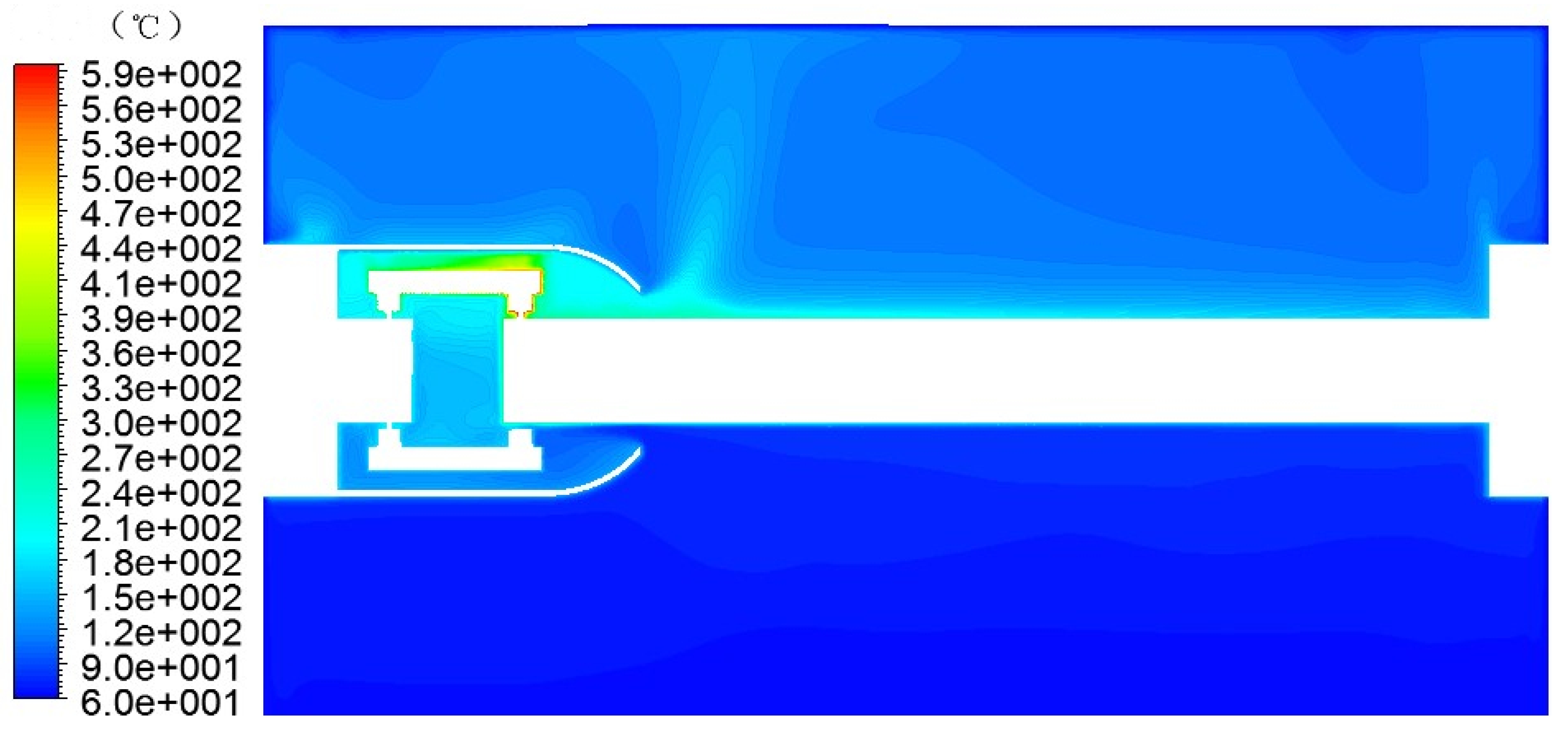

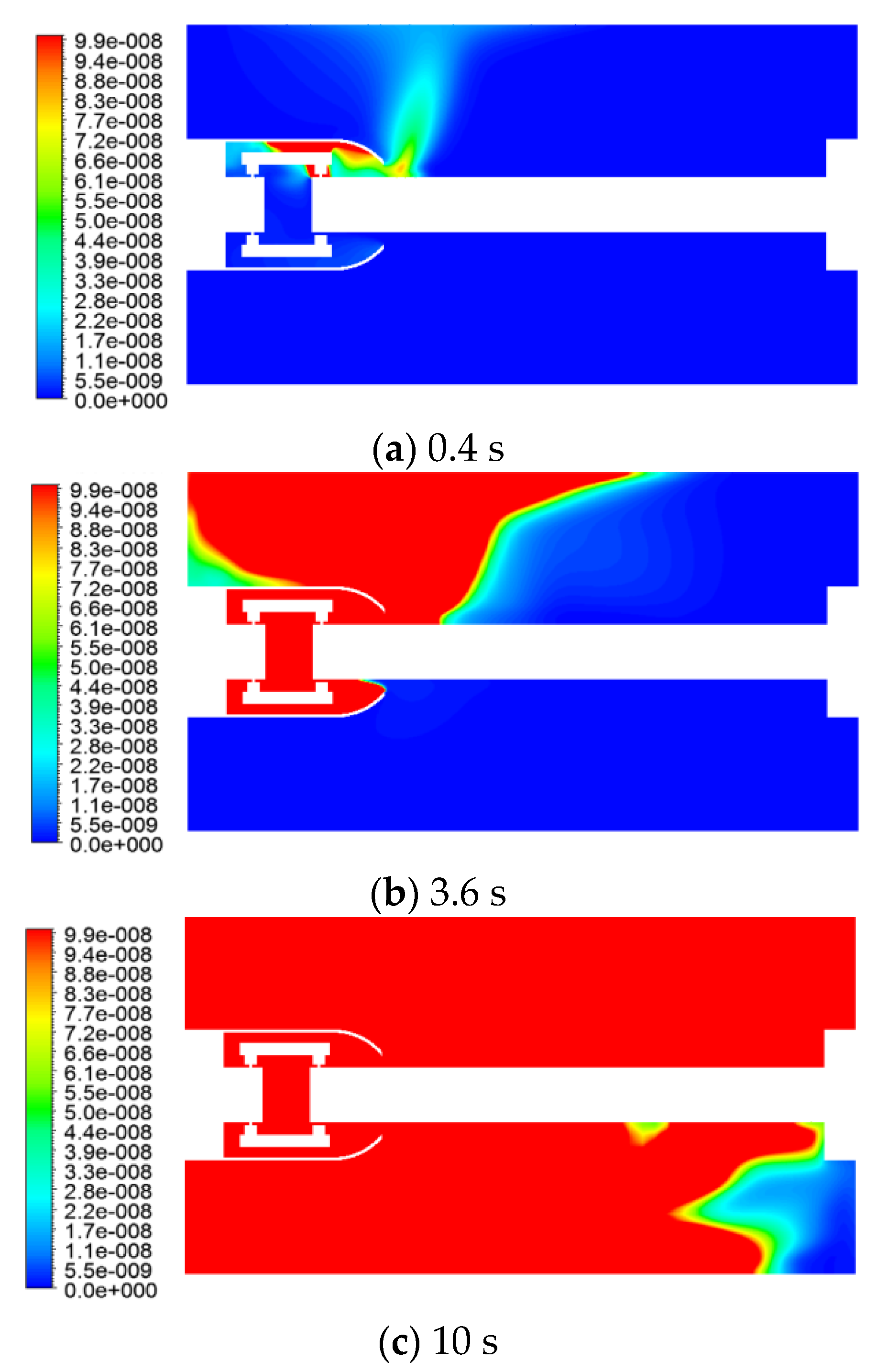
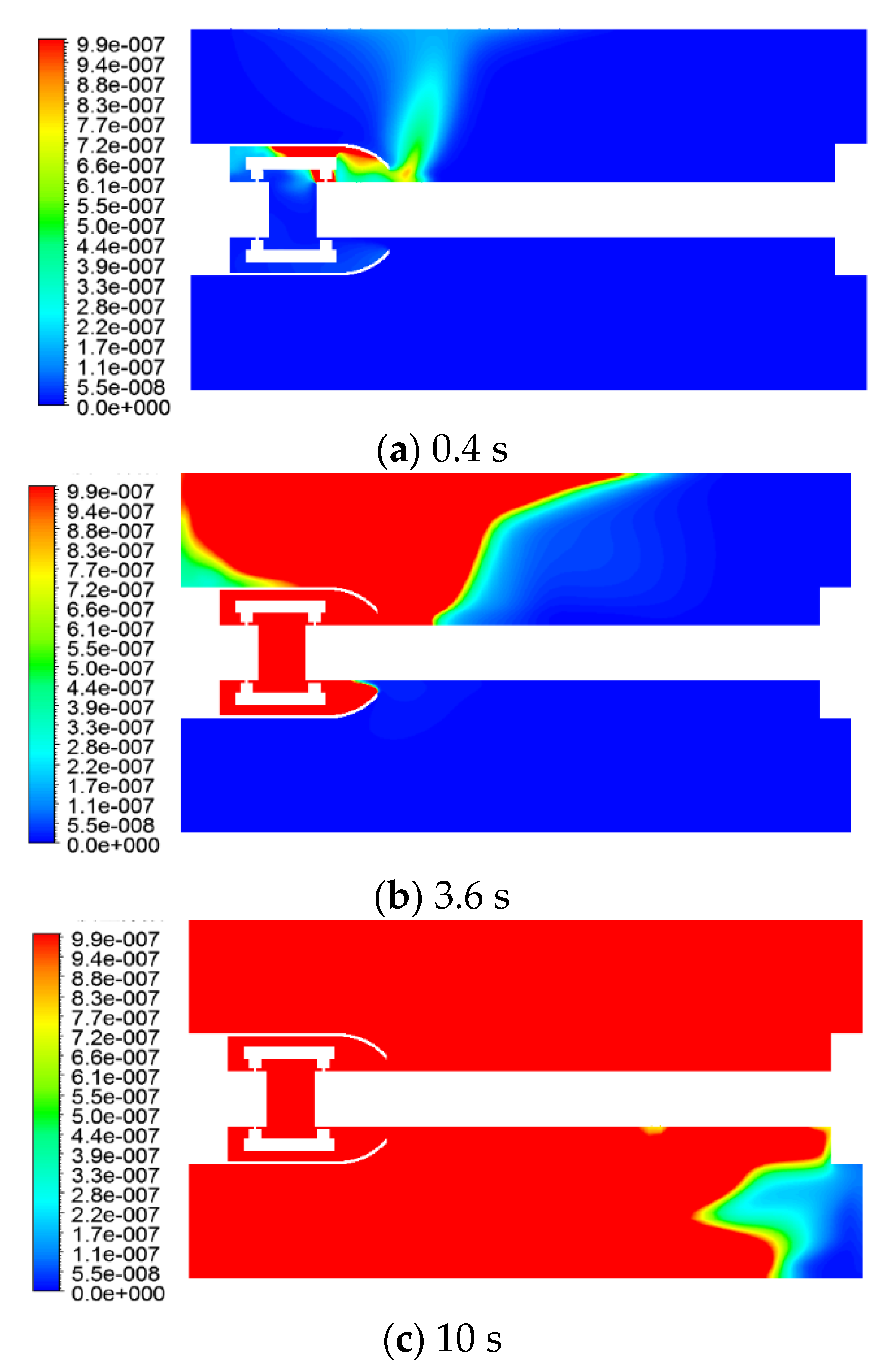
| Fluid Domain | Air | SF6 |
|---|---|---|
| Density ρ (kg/m3) | 1.225 | 3 |
| Kinematic viscosity v (m2/s) | 1.46 × 10−5 | 1.42 × 10−5 |
| Thermal diffusivity α (m2/s) | 1.96 × 10−5 | 6.01 × 10−6 |
| Fluid velocity u (m/s) | 0.3 | 0.3 |
| Feature length L (m) | 0.25 | 0.0975 |
| Temperature difference ∆T (K) | 29 | 69 |
| Volume expansion coefficient β (1/K) | 0.00318 | 0.00275 |
| Reynolds Number Re | 5134 | 6179 |
| Grashof Number Gr | 6.6 × 107 | 7.7 × 107 |
| Rayleigh number Ra | 4.9 × 107 | 6.06 × 107 |
Publisher’s Note: MDPI stays neutral with regard to jurisdictional claims in published maps and institutional affiliations. |
© 2022 by the authors. Licensee MDPI, Basel, Switzerland. This article is an open access article distributed under the terms and conditions of the Creative Commons Attribution (CC BY) license (https://creativecommons.org/licenses/by/4.0/).
Share and Cite
Jia, C.; Zhao, W.; Zhu, Y.; Lu, W.; Tang, Z. A Numerical Study on the Decomposition and Diffusion Characteristics of SF6 in Gas-Insulated Switchgear with Consideration of the Temperature Rising Effect. Energies 2022, 15, 7834. https://doi.org/10.3390/en15217834
Jia C, Zhao W, Zhu Y, Lu W, Tang Z. A Numerical Study on the Decomposition and Diffusion Characteristics of SF6 in Gas-Insulated Switchgear with Consideration of the Temperature Rising Effect. Energies. 2022; 15(21):7834. https://doi.org/10.3390/en15217834
Chicago/Turabian StyleJia, Chenglong, Wenbin Zhao, Yong Zhu, Wu Lu, and Zhong Tang. 2022. "A Numerical Study on the Decomposition and Diffusion Characteristics of SF6 in Gas-Insulated Switchgear with Consideration of the Temperature Rising Effect" Energies 15, no. 21: 7834. https://doi.org/10.3390/en15217834
APA StyleJia, C., Zhao, W., Zhu, Y., Lu, W., & Tang, Z. (2022). A Numerical Study on the Decomposition and Diffusion Characteristics of SF6 in Gas-Insulated Switchgear with Consideration of the Temperature Rising Effect. Energies, 15(21), 7834. https://doi.org/10.3390/en15217834







